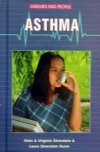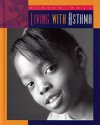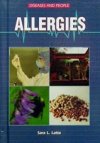Attacking Asthma Additional Information
(National Jewish Medical and Research Center) or www.asthma.ca/global/kids.php(Asthma Society of Canada).
You can find out more about a survey of U.S. homes to check for allergens at www.nih.gov/news/pr/jul2004/niehs-06.htm (National Institutes of Health).
Information about a test to identify children with asthma can be found at www.njc.org/news/health-news/y2005/childhood-act.aspx (National Jewish Medical and Research Center).
To take an asthma-control test, go to www.asthmacontrol.com/ (GlaxoSmithKline).
Information about Jerome Bettis and how he copes with asthma can be found at www.chp.edu/clinical/03a_infect_news.php (Children’s Hospital of Pittsburgh) and www.nfl.com/news/story/8367977 (NFL). A list of other famous people who had asthma can be found at www.healthsmart.org/ibreathe/2_0_asthma/2_2_6_famous_people.htm
(GlaxoSmithKline).
Sohn, Emily. 2004. Allergies: From bee stings to peanuts. Science News for Kids (April 14). Available at http://www.sciencenewsforkids.org/articles/20040414/Feature1.asp.
Books recommended by SearchIt!Science:
 |
Asthma— Alvin Silverstein, Virginia Silverstein, Laura Silverstein Nunn
Published by Enslow Publishers, 1997.
Asthma affects 5 million children. Why is this disease so common? How dangerous is it? How do you help people with asthma? These questions and many more are thoroughly discussed in this book. |
 |
Living with Asthma— Shirley Wimbish Gray
Published by Child’s World, 2003.
“One out of every 14 children has asthma. It is the most common chronic disease in children. Learning more about asthma is one way to help those who have it,” writes the author of this introduction to asthma. With full-color photographs, the book explains what asthma is and discusses what it is like to have asthma. Learn about what can trigger an asthma attack, how asthma is treated, and who gets asthma. Finally, discover how scientists are working to find a cure for the disease. |
 |
Allergies— Sara L. Latta
Published by Enslow Publishers, 1998.
What causes reactions that can range from a simple sneeze to a life-threatening attack? The answer is allergies. In this book, you’ll learn about the immune system, how allergies develop, and how they are treated. The book includes information about famous scientists such as Louis Pasteur as well as about recent breakthroughs in allergy research. |
Power Words
allergy A condition in which a person is very sensitive to something in the environment, such as pollen or a kind of food. A person with an allergy may sneeze, have trouble breathing, and develop a rash on the skin. Allergies can be mild or so severe that a doctor is needed.
asthma A condition in which the air tubes that lead to the lungs become narrow, making it hard to breathe. People who have asthma often cough and sometimes have a tight feeling in the chest. Asthma is usually caused by allergies.
immune system The parts of the body that act together to protect the body against infection or disease. White blood cells and antibodies, which attack and weaken germs, are parts of the immune system that circulate in the blood. The skin, which acts as a barrier to germs, is also part of the immune system.
mucus A thick, slippery substance that covers and protects a part of the body, such as the inside of the mouth and nose.
 |
Copyright © 2002, 2003 Houghton-Mifflin Company. All rights reserved. Used with permission.